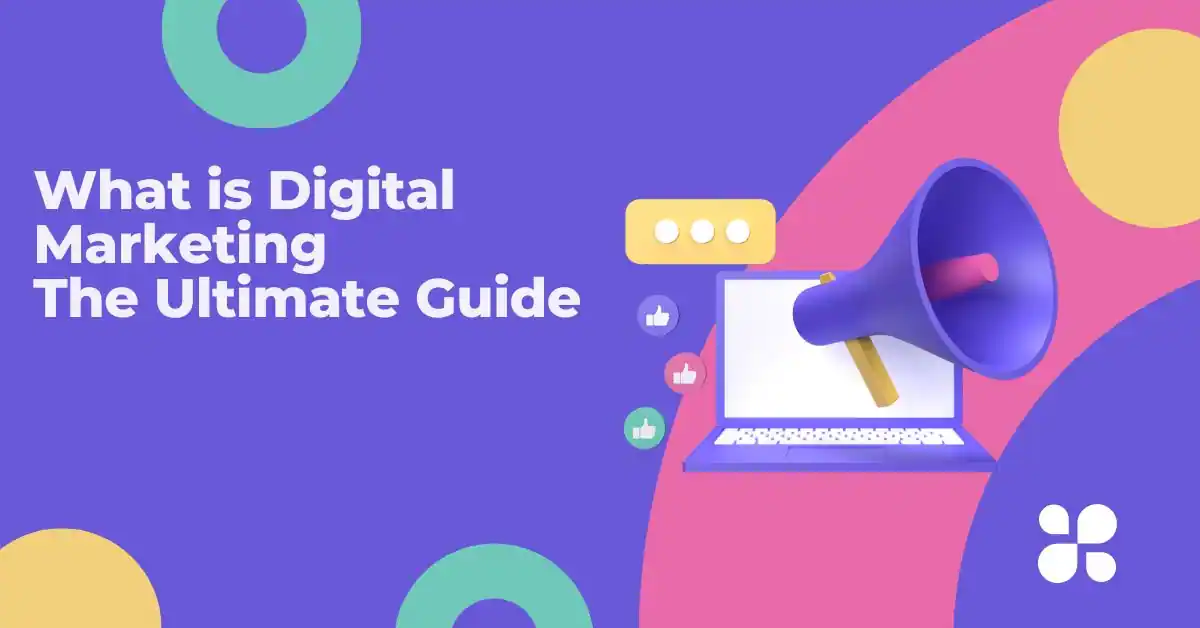The debate between digital marketing and traditional marketing remains relevant as businesses strive to allocate their resources effectively to maximize reach and return on investment (ROI).
- Understanding Digital Marketing
- Understanding Traditional Marketing
- Comparing Digital and Traditional Marketing
- Advantages of Digital Marketing in 2024
- Advantages of Traditional Marketing in 2024
- Challenges of Digital Marketing in 2024
- Challenges of Traditional Marketing in 2024
- Finding the Right Balance
- Conclusion
Understanding Digital Marketing
Digital marketing encompasses all marketing efforts that use an electronic device or the internet. Businesses leverage digital channels such as search engines – social media – email and websites to connect with current and prospective customers.
Key Components of Digital Marketing
- Search Engine Optimization (SEO): Enhancing website visibility on search engines.
- Content Marketing: Creating valuable content to attract and engage audiences.
- Social Media Marketing: Utilizing platforms like Facebook, Instagram, and LinkedIn to promote products and services.
- Email Marketing: Sending targeted emails to nurture leads and maintain customer relationships.
- Pay-Per-Click Advertising (PPC): Paying for ads to appear on search engines or social media.
- Affiliate Marketing: Partnering with affiliates to promote products and earn commissions.
Understanding Traditional Marketing
Traditional marketing refers to the conventional methods of advertising and promotion that have been used for decades. These methods include print advertisements – broadcast advertising – direct mail – telemarketing & outdoor advertising.
Key Components of Traditional Marketing
- Print Advertising: Newspapers – magazines – brochures – and flyers.
- Broadcast Advertising: Television and radio commercials.
- Direct Mail: Sending physical promotional materials to potential customers.
- Telemarketing: Using phone calls to reach potential customers.
- Outdoor Advertising: Billboards – posters – and transit advertising.
Comparing Digital and Traditional Marketing
Reach and Targeting
- Digital Marketing: Offers unparalleled precision in targeting specific demographics, interests, and behaviors. With tools like Google Analytics and Facebook Insights, businesses can track user behavior and adjust their strategies in real-time.
- Traditional Marketing: Often casts a wider net, which can be beneficial for brand awareness but lacks the precision of digital targeting. Traditional methods rely more on general audience metrics like circulation numbers or viewership ratings.
Cost Efficiency
- Digital Marketing: Generally more cost-effective especially for small businesses. PPC campaigns, for example, allow businesses to set their budgets and only pay when users click on their ads.
- Traditional Marketing: Can be expensive particularly for small businesses. Television and radio ads, as well as print placements in prominent publications often require significant financial investments.
Measurability and Analytics
- Digital Marketing: Provides detailed analytics and data. Marketers can measure every aspect of their campaigns, from click-through rates to conversion rates, and adjust their strategies accordingly.
- Traditional Marketing: More challenging to measure accurately. While some metrics, like sales lift and brand recognition can be tracked, they often lack the real-time, granular data available in digital marketing.
Engagement and Interaction
- Digital Marketing: Facilitates direct interaction with consumers through social media, blogs and email. Brands can engage with their audience in real-time, respond to inquiries and build relationships.
- Traditional Marketing: Offers limited interaction. Engagement is often one-sided, with the brand broadcasting a message and hoping it resonates with the audience.
Advantages of Digital Marketing in 2024
- Enhanced Personalization: With advanced AI and machine learning algorithms, digital marketing allows for highly personalized content that caters to individual preferences and behaviors.
- Global Reach: The internet has no geographical boundaries, enabling businesses to reach a global audience effortlessly.
- Speed and Flexibility: Digital campaigns can be launched and adjusted quickly, responding to market trends and consumer feedback in real-time.
- Cost-Effective: Digital marketing strategies can be tailored to fit any budget, making it accessible for businesses of all sizes.
- Interactive Content: Tools like quizzes – polls – and interactive videos enhance user engagement and provide valuable insights.
Advantages of Traditional Marketing in 2024
- Tangible Impact: Physical materials like brochures and business cards create a lasting impression and can be more memorable.
- Wide Audience Reach: Traditional media like television and radio can reach large audiences quickly, making them effective for brand awareness.
- Local Market Penetration: For businesses targeting local markets, traditional marketing can be more effective through local newspapers radio stations and community events.
- Trust and Credibility: Established traditional media outlets often carry a higher level of trust and credibility with audiences.
- Less Digital Noise: With the saturation of digital ads traditional marketing can stand out by avoiding the clutter of online advertising.
Challenges of Digital Marketing in 2024
- Privacy Concerns: With increasing data privacy regulations, marketers must navigate the complexities of compliance while still delivering personalized experiences.
- Ad Blockers: The use of ad blockers continues to rise, making it harder for ads to reach their intended audience.
- Content Saturation: The internet is flooded with content, making it challenging for brands to stand out and capture attention.
- Rapid Changes: The digital landscape evolves quickly, requiring marketers to stay updated with the latest trends and technologies.
Challenges of Traditional Marketing in 2024
- High Costs: Traditional marketing campaigns can be expensive, particularly for small businesses with limited budgets.
- Measurement Difficulties: Tracking the effectiveness of traditional marketing efforts can be challenging and less precise compared to digital analytics.
- Limited Interaction: Traditional marketing offers fewer opportunities for direct consumer engagement and feedback.
- Environmental Concerns: The use of paper and other physical materials raises sustainability issues.
Finding the Right Balance
In 2024, the most successful marketing strategies often blend both digital and traditional methods, leveraging the strengths of each to create a cohesive and comprehensive approach.
Integrated Marketing Strategies
- Omnichannel Marketing: Creating a seamless experience across both digital and traditional channels, ensuring consistent messaging and brand identity.
- Data-Driven Decisions: Using digital analytics to inform traditional marketing efforts and vice versa, creating a feedback loop that enhances overall strategy.
- Content Repurposing: Utilizing the same content across multiple platforms, adapting it to fit the unique characteristics of each channel.
Conclusion
The debate between digital marketing and traditional marketing is not about choosing one over the other but finding the right balance that suits your business goals and target audience.
In 2024, a strategic blend of both approaches informed by data and driven by creativity, will position businesses to thrive in an ever-evolving marketplace.




